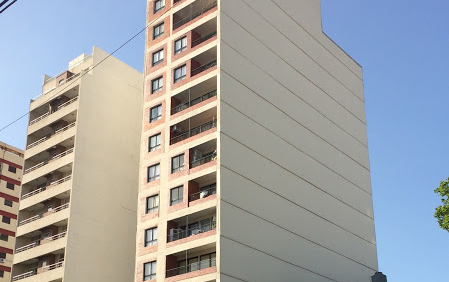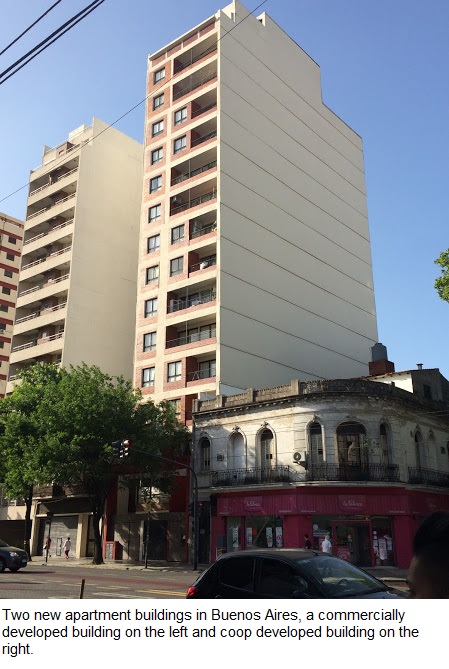
May 16, 2018
By Ben Seigel, Executive Director, 21CC
Last year, the 21st Century Cities Initiative awarded seven new seed grants to teams of Johns Hopkins faculty working with city agencies or nonprofit organizations on short-term, applied research projects geared towards informing key policies aimed at facilitating economic inclusion, mixed-income neighborhoods, and safe and healthy neighborhoods. These grants are 21CC’s second round of seed grants. Most of the grants have reached their halfway point and have already provided valuable insights to urban policy. A couple of the project updates are highlighted below.
One of our seed grant projects looks at a unique approach to affordable housing, known as mutual aid housing cooperative (MAHCs), that has taken root in several Latin American cities. The model was recently highlighted in this Fast Company article about radical real estate ideas to fix the broken housing system in the U.S. For our project, a team from the Johns Hopkins anthropology department and the University of Buenos Aires are working with a community-based organization, Movimiento de Ocupantes e Inquilinos (MOI) – Movement of Squatters and Tenants – to measure the impact of the Buenos Aires version of MAHCs, Programa de Autogestión para la Vivienda (PAV) – Program for Self-Managed Housing.

PAV, which was formed in the early 2000s, allocates public funds from the city of Buenos Aires to households that have come together to form a nonprofit cooperative. The cooperative is responsible for working with the city and other entities to design, build, and manage housing, typically apartment buildings, for the members of the group. The 21CC seed grant project is examining six coop-developed projects in Buenos Aires, ranging in size from a 23-unit building to a 326-unit building. The research team is specifically looking at the demographics and characteristics of coop members; how they organized themselves to complete their projects, including negotiating with city authorities and construction contractors; and the results of the projects in terms of affordability, housing quality, and resident satisfaction, including comparison with similar, commercially developed housing.
The photo to the right offers an interesting comparison. Two similar apartment buildings were erected at about the same time on contiguous lots in the bustling neighborhood of La Paternal. Their resemblance, however, is only superficial. The building on the left was constructed as a commercial project by private investors. The one on the right by the housing coop, Cooperativa Nueva Imagen (New Image). The commercial building was completed in the projected timeframe of two years and consists of 14 floors of identical studio apartments for temporary rental. The coop building took significantly longer to build, but it consists of 28 units of two-bedroom, one and a half bathroom apartments with terraces and superior finishes designed as long-term residences for coop member families. The coop building also has a multi-purpose room for common activities; and a shared lawn and patio. The construction costs of the two buildings were nearly identical, despite the longer construction time and higher quality apartments and amenities in the coop building.
Another 21CC seed grant project is assessing potential impacts of a new zoning policy in Baltimore City that calls for the re-purposing or closing of certain alcohol outlets in residential neighborhoods. This project is led by a team from the School of Medicine and The Urban Institute working with Systems Science experts from the School of Medicine and the Whiting School of Engineering. Their applied, city partners are Baltimore’s Planning Department and Department of Housing and Community Development, which is charged with overseeing the zoning provision.

The policy is, in part, a bold attempt to reduce violent crime based on research showing that murders cluster around alcohol outlets and that nearly half of all homicides are caused by excessive drinking. Today, in some Baltimore neighborhoods, there is a store selling alcohol for every 20 residents, while the traditional standard is no more than one alcohol outlet per 1,000 people. Under the new zoning provision, 76 nonconforming alcohol outlets are required to stop selling alcohol by June 2019.
The seed grant project has been working with community stakeholders and content experts to identify a range of neighborhood indicators, including but not limited to violent crime rates, that are likely to be impacted by the removal of alcohol outlets. In a recent meeting with community stakeholders, the potential for adaptive re-use of property and community-owned businesses were discussed.
In addition to identifying the neighborhood indicators, the project is also working to establish baseline conditions for these indicators in neighborhoods impacted by the new zoning provisions as compared to similar neighborhoods that are unlikely to be impacted. No doubt, many other cities will be watching the results in Baltimore with much anticipation to find out if the removal of alcohol outlets in high-crime, high-poverty residential neighborhoods can improve the health and safety of these communities.

